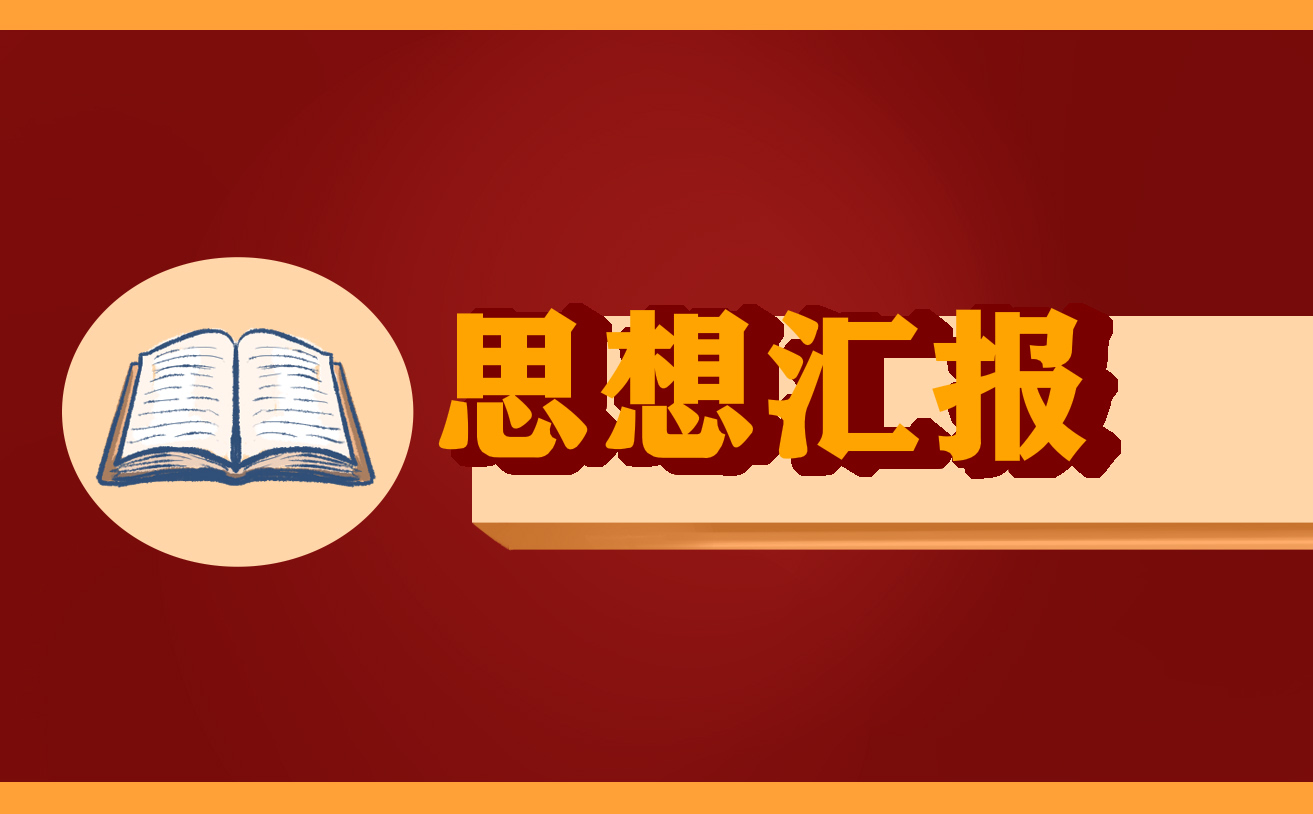英语人教版课件第1篇教学内容:本节课是《新标准英语》三年级起(第一册)Module7Unit2的教学内容Howoldareyou?教学目标:1、学习目标语句:Howoldareyou?I’m……,Yo下面是小编为大家整理的英语人教版课件10篇,供大家参考。

英语人教版课件 第1篇
教学内容:
本节课是《新标准英语》三年级起(第一册)Module7 Unit2的教学内容How old are you?
教学目标:
1、学习目标语句:How old are you ?I’m… …,You’re… …单词:old,look,how old
2、能口头运用How old are you?I’m… …这类语句询问对方的年龄并回答。
3、能在图片提示下识别单词old,look.
4、学习本课的歌曲,这项内容不作要求,让学生根据自己的情况选择学习与掌握。
重点难点:
能用How old are you来询问对方的年龄,并能用I’m… …作回答。
教学准备:
录音机,磁带
教学过程:
一、热身复习
1、带领学生唱学过的英文歌《Please stand up》,《Ten little fingers》。
2、让学生以开火车的形式说数字,复习1——12的数字。
(齐唱旧歌,开火车说数字都是为了激发学生学习兴趣,调动学生的积极性,也是为后面学习表述年龄作铺垫)
二、课文导入
对学生的表现进行鼓励表扬,然后针对课文内容向学生提问:“How old is Sam?”引导学生给出答案:“Sam is nine.”
(这样的导入既简明也对启发学生理解How old的意思起到一定作用)
师对学生说:“大家知道Daming的年龄吗?今天的手工课上,大家都在制作年龄牌,Daming闹了一个小笑话,我们一起去看看吧!(激发学生的好奇心,想去学习课文,一探究竟)
板书课题:How old are you?(让学生跟读几次,明白中文意思。)
三、课文教学
1、播放录音前,请学生仔细看书上的图,并试着猜测故事的情节。有的学生可能会提出一些疑问,请学生带着疑问听录音。
2、老师可以在听录音前向学生提出一些具体的问题,请学生在听的同时找出问题答案,例如:“How old is Sam?How old is Daming?What are the children doing?Why are the children laughing at Daming?”老师再使用中文重复这些问题。
3、(播放录音)听过第一遍录音后,老师可以请几个较好的学生试着回答刚才的问题,老师先不要公布正确答案。请学生看着书听第二遍录音,请刚才没有找到问题答案的学生再次回答问题。
4、其后,老师可以请学生以小组为单位,找出问题的正确答案(Sam is nine.Daming is nine,too.They are making age badges,He wears his age badge upside down)。
学生可以使用中文回答后两个问题。回答正确的学生由老师给予适当的奖励。
5、再听几遍录音,请学生跟读。
6、老师教读并讲解全文。再让生齐读全文,在自由朗读,最后请学生以小组为单位表演课文,请几个小组到教室前面展示。
四、完成任务
完成运用任务1(Act it out):把学生分为多人小组,仿照书上的事例使用“How old are you?I’m… …”进行关于年龄的问答。作重强调相同的岁数最后要使用Too.(可多请几个小组)完成运用任务2(Sing the song)
1、先让学生读歌曲,理解大意,作重理解How old are you and How are you。
2、播放歌曲,让学生整体感受音乐,再轻声跟唱,反复几次后,齐唱歌曲。
完成运用任务3(Game):仿照书上的`事例开展游戏,复习数字1——12,老师也可以使用“Simon says”的形式开展这个游戏。首先请全班学生逐个报数(可以重复)。
当每个学生都知道自己的数字后,老师开始发出口令,例如:“Simon says‘2,4,6and10,stand up,please.’”数字为2,4,6,10的学生要站起来。
如果老师的口令中没有“Simon says”,而学生错误地执行了口令,他们就要被罚出局。老师可以请被罚出局的学生发出口令。坚持到最后的学生获胜,由老师给予奖励。
五、课堂小结
英语人教版课件 第2篇
教学目标:
1. 学习掌握本单元重要词汇:spring roll, soya milk, would rather (not) do sth.
2. 理解课文文本并熟读
3. 能正确运用核心句型去提出建议并给出相应回答及理由:
Shall we have some _____? / Let’s have some _____.
Yes, that’s a good idea because… Let’s have some _____.
No, I don’t like _____ very much because… I’d rather have some _____.
4. 感知亲友间关心的重要性,鼓励学生对朋友家人表达关爱
教学重点:
1. 理解课文,熟读模仿
2. 运用句型:Shall we have some _____? / Let’s have some _____.
Yes, that’s a good idea because… Let’s have some _____.
No, I don’t like _____ very much. I’d rather have some _____ because…
学习难点:
1. 根据不同情境活用句型
教学流程:
Steps Learning activities Teaching purposes
Lead-in 1. Enjoy some pictures and a song.
2. Answer two question:
1) What food or drink did you see?
2) What’s your favourite food and drink? 激发学生兴趣,词汇铺垫
Input 1. Teach the new phrases.
2. Teach and practice the sentence patterns.
3. Listen to the recording and complete the table.
4. Read the text and have a role play.
5. Complete the dialogues 根据文本内容训练学生的听说能力,帮助学生理解课文并适当扩展,并通过练习、角色扮演巨型操练等巩固
Output 1. Add a sentence pattern of giving the suggestion.
2. Group work: make a dialogue and buy some presents for Ben. 通过更换情境来检测学生对句型的掌握,突破食物和饮料的局限,使句型进一步应用在生活中
Proverb:
1. Answer a question: What can we learn from the shopping?
2. Show some pictures and say something about these pictures. (care more about your friends and family members.) 情感教育:关注朋友,更要关爱家人,为回家作业铺垫
Assignment:
1. Listen to the recording of the text twice and read after the tape twice.
2. Group work: choose a present for our mothers. 让学生通过听、说、读进一步巩固本节听说课所学知识
教学活动
【导入】pre-task preparation
Have a free talk
When is your birthday?
Did you have a birthday party in the past?
Are you going to have a birthday party next year?
Who are you going to invite?
【讲授】while-task procedure
1. Learn different common ways of opening and responding a telephone conversation
(1) Listen to the tape
(2) Answer the question What are they doing?
(3) Find out the common ways of opening and responding a telephone conversation
2. Learn the new word and phrase
free, be free
4. Learn how to politely accept or decline an invitation
5. Practise politely accepting or refusing an invitation with the partner
6. Talk about the possible activities at Ben’s birthday party
7. Learn the new words and phrases
karaoke, sound, chess, forward, look forward to
8. Listen to the tape
9. Listen to the tape and repeat
10. Read the dialogue in roles
11. Answer some questions about the dialogue
(1) what does“What a pity”mean in Chinese?
(2) what does“see you then”mean in Chinese?
(3)Why does Kitty invite the friends instead of Ben?
【活动】post-task activity
12. Conclude this lesson
13. Plan a birthday party for your best friend and make a phone call to invite the other friends to the party
【作业】homework
1. Complete the learning sheet
2. Answer some questions about the dialogue
(1) What are they talking about?
(2)When and where will the party start?
(3) What are they going to do at the party?
(4) Who is going to come to the party? Why?
(5)What does Peter think of Kitty’s plan?_
(6)Why isn’t Jill going to the party?_
(7)What does Jill ask Kitty to do?_
(8) what does“What a pity”mean in Chinese?_
(9) what does“see you then”mean in Chinese?
(10)Why does Kitty invite the friends instead of Ben?
3. Plan a birthday party for another friend , make a phone call to invite your classmates to the party and write down your dialogue.
英语人教版课件 第3篇
新的学期开始了,本学期我担任八年级102班的英语教学工作。为了顺利完成教育教学任务,在教学中贯彻新目标教学的要求,我将结合学校工作计划要求,规范常规教学,提高教学质量。
一、指导思想。
在本学期的英语教学中,坚持以下理念的应用:第一要面向全体学生,关注每个学生的情感,激发他们学习英语的兴趣,帮助他们建立学习的成就感和自信心,培养创新精神;
第二,目标设计要以学生技能,语言知识,情感态度,学习策略和文化意识的发展为基础:突出学生主体,尊重个体差异:第三要注重过程评价,促进学生发展,建立能激励学生学习兴趣和自主学习能力发展的评价体系。总之,让学生在使用由于中学习英语,让学生成为Gooduser而不是Learner。让他们在使用和学习英语的过程中,体味到轻松和成功的快乐。
二、教材分析
八年级上册英语共有十个单元,每个单元都列出了明确的语言目标,其主要的功能项目和语法结构,以及需要掌握的基本词汇,并分为A和B两部分。A部分是基本的语言内容,B部分是知识的扩展和综合的语言运用,还有SELFCHECK部分,学生可用来自我检测本单元所学的语言知识。本教材各个单元活灵活现,贴近生活实际。
三、学生基本情况分析
学生虽经一年的英语教学,对英语有了一定的领会,但在听说读写各个方面的基础仍有些薄弱,另外,学生在情感态度,学习策略方面还存在诸多需要进一步解决的问题。有的同学不能明确学习英语的目的,没有真正认识到学习英语的目的在于交流,有些同学在学习中缺乏小组合作意识,有些不敢开口,或者声音太小。而通过初中一年的英语学习,很多学生已经能听懂有关熟悉话题的语段和简短的故事,能与教师或同学就熟悉的话题交换信息,总的来说,本班的英语具有挑战性,需要耗费不少的时间和精力。
四、目的要求。
1、根据学生的特点以及英语学习的规律,要采用有效的教学手段和教学方法。创设生动活泼的语境,让学生运用所学语言开展活动。
2、本学期要着重注意培养学生良好的学习习惯,以保证课堂大容量、高密度、快节奏训练的展开,还要注重培养学生的自学能力,指导及鼓励他们多使用工具书。
3、从学生实际出发,充分发挥学生的主体作用,进一步加强对学生的学法指导。
4、充分利用直观教具和现代化的教学手段,更加注重现代技术与学科之间的整合,多设计教学情景,以练为主的原则,抓好基础训练,注重培养学生直接用英语表达思想的能力,扩大课堂容量,提高课堂效率。
5、认真钻研教材,掌握每单元的教学目的和要求,正确地把握教材的重点和难点,根据的学生年龄特点及班级的实际情况,精心设计教学程序,选择适当的教学方法,认真备课。
五、具体措施
1、在课堂和作业布置上体现知识的梯度,扩大照顾面。
2、引导学生找出适合自己的学习方法,把握好学习的各个环节,让他们能养成自觉学习英语的习惯。
3、突出学生主体,尊重个体差异,让学生在老师的指导下构建知识,提高技能,磨练意志,活跃思维,展现个性,发展心智和拓展视野。
4、实施“一帮一”活动,让成绩好的同学带动差生,同时亦监督差生每天的作业完成情况和背诵情况。
5、建立英语学习小组,并以小组为单位开展各种活动。同时,整合家长的力量,让家长在周末期间监督学生听磁带、读课文。
6、通过听、说、读、写等形式,进行大量的语言操练和练习。
7、每天利用固定时间进行阅读训练,使学生能尽快掌握阅读技巧,培养阅读兴趣,从整体上提高学生掌握语言知识的能力。
8、以上几条,坚持每天落实,由组长负责,老师抽查,对于完成较好的组给予鼓励表扬。同时,对不同层次的学生要求也相应的不同,能让其渐渐对英语产生兴趣,慢慢加大要求。尤其是对后进生,每天的任务不是太重,及时完成就立即表扬。
六、教学中应注意的问题
1、在英语教学过程,应注意教养学生综合运用英语的能力。在培养学生阅读能力的同时,注意加强听、说技能的训练。能过听、说、读、写技能的综合训练,促进学生综合运用英语的能力。逐步具有运用英语进行交际的能力。
2、在设计教学活动的过程中,教师应考虑活动目标明确、简洁,活动形式避免单一,注意广度和深度。
3、活动资源的选择要适合学生,资源的利用要合理化。
七、教学进度(略)
英语人教版课件 第4篇
教学目标:
1、知识目标:能够理解和应答How much are the______和How much is the ____
认识expensive和on sale
2、能力目标:能够运用所学对话买东西。
3、情感目标:培养自信交流、合作互助的优良品质。
教学重难点:
1、重点:理解和应答How much is the ____和How much are the ____
2、难点:认识expensive 和on sale
教学过程:
一、复习
1、一起唱上节课的chant
2、出示水果卡片,并问:What’s this (复习水果)
3、复习句型:How much for one_____/ ____ yuan./ I’ll take ___, please. Thank you. 让学生找上节课与其做对话练习的那个伙伴,一起练习他们编的对话。让他们练习买卖教室里的东西。
二、新授
1、教师假装没有铅笔,并说:I want some pencils. But I have no pencils. (加上手势,表情) Do you have any pencils (伸出手去要,学生会拿出铅笔给老师) 多引导几个这样的对话,练习Do you have any ____这个句型。然后由师生对话转到生生对话。
2、当学生拿出铅笔时,教师问:How much is the pencil The ___. How much How much yuan (教师做出从兜里掏钱的动作,学生会明白)
T: How much is the pencil
S: ___ yuan.
T: I’ll take ____, please.
S: (给教师一支铅笔)
T:Thanks!
S: You’re welcome.
板书 How much is the ____ = How much for one _____
领读几遍。
3、T: Do you have any erasers I want two erasers. (学生拿出两块橡皮)
T: How much are the erasers (板书)
向学生说明How much are 是用来询问一个以上的东西的价钱;
而How much is 是用来询问一个东西的价钱。
4、拿出标有价钱的单词卡片,师生问答、生生问答。
如果遇到贵的,引出expensive, on sale.
T: How much are the ____
S: ___ yuan.
T: Hmmm. No, thanks. That’s expensive Are the ____ on sale
S: Yes/No.
T: How much is/are the ____
S: _____ yuan.
5、读课文,解释expensive 和 on sale.
6、从学生中收集东西,引导情景对话。
7、小组练习,展示对话。
板书设计:
Lesson23How much are they
How much is the pencil = How much for one pencil
How much are the erasers
Expensive on sale
课堂教学资源:
Lots of = a lot of = many 许多
课后习题:
一、选择正确答案
1、当别人向你道谢时,你该如何回应?
A.No! B. You’re welcome. C. Yes.
2、你向售货员询问某物的价格时,应该怎么说?
A. Howmuch is it B. How many are there C. I ‘ll take two, please!
3、如何在饭店里点菜呢?
A. I am hungry. B. I’d like some fish. C. I don’t like chicken.
4、别人问你是否想喝茶时,你如何作肯定回答?
A. Yes, please. B. Sorry. C. No, thanks.
英语人教版课件 第5篇
一、教学目标:
1. 语言知识目标:
1) 能掌握以下单词:
chopsticks, coin, fork, blouse, silver, glass, cotton, steel, grass, leaf, produce, widely, be known for, process, pack
能掌握以下句型:
① —This ring looks nice. Is it made of silver?
—Yes, and it was made in Thailand.
② What is it made of/from?
③ China is famous for tea, right?
④ Where is tea produced in China?
2) 能够用英语描述及询问物品的制作材料,正确理解被动语态的用法及句子结构。
2. 情感态度价值观目标:
了解一些日常用品的制成材料,增加生活常识,养成良好的生活习惯;
了解一些地方知名产品或传统艺术品的制作过程以及制作材料,培养学生的民族自豪感及爱国主义精神。
二、教学重难点
1. 教学重点:
1) 掌握本课时中出现的生词
2) 能够用英语描述及询问物品的制作材料
3)正确理解被动语态的用法及句子结构。
2. 教学难点:
理解被动语态的用法及句子结构。
三、教学过程
Ⅰ. Lead in
1. 播放动画片《造纸过程》的视频,让学生们了解这个中国传统发明的情况。
T: Who invented paper first?
S1: Can Lun invented it in Han dynasty.
T: What was paper made of then?
S2: It was mainly made of bamboo.
T: was it easy for people to make paper then?
S1: No, it was very difficult then.
T: What is paper made of now?
S3: It’s mainly made of wood, bamboo, and cotton.
…
Ⅱ. Presentation
1. Present the sentence structure, using the pictures on the big screen:
—What’s the golden medal made of?
—It’s made of gold.
—Is this table made of wood?
—No, it isn’t. It’s made of glass.
—Is Butter made from meat?
—No. It’s made from cream?
让学生们学习掌握be made of/from句型的.用法,及be made of与be made from的区别。
两词组都是“由……制成的”之意。be made of 指从原料到制成品只发生了形状变化,没有发生本质变化(属物理变化)
be made from指从原料到制成品发生了质的变化,已无法复原(属化学变化)。
Ⅲ. Learning
1. Show some pictures on the big screen. Try to learn the new words using “be made of” structure.
Learn the new words: chopsticks, coin, fork, blouse, silver, glass, cotton, steel, grass, leaf
e.g. This pair of chopsticks are made of bamboo.
This coin is made of silver.
Is this blouse made of cotton?
No, it isn’t. It’s made of silk.
What’s the fork made of?
It’s made of steel.
These pigs like grass very much.
a piece of leaf
Kolas like leaves.
2. Ss discuss with their partner and try to learn the new words.
3. Give Ss five more minutes to remember the new words.
Work on 1a:
Let Ss read the things and materials in 1a. Discuss with their partners and match them with the materials. More than one answer is possible.
What are these things usually made of? Match them with the materials. More than one answer is possible.
1. chopsticks
2. window
3. coin
4. stamp
5. fork
6. blouse
a. wood
b. gold
c. silver
d. paper
e. silk
f. glass
Check the answers with the Ss.
Ⅳ. Listening
1. T: Tell Ss they will hear a conversation about some things and material. Listen and match the products with what they are made of and where they were made.
Things Made of Made in
shirts cotton Korea
chopsticks silver Thailand
ring steel America
2. Let one student read the words in the box, Play the recording for the Ss to listen.
3. Ss try to listen and match the things with the material and here they were made.
4. Play the recording again. Let Ss check the facts they hear.
5. Check the answers
Ⅴ. Pair work
1. Read the conversation in the box in 1c.
2. Ss try to made conversations using the information in 1b.
e.g. A: Your new shirt looks very nice. Is it made of cotton?
B: No, it isn’t. It’s made of silk.
3. Let some pairs read out their conversations.
Ⅵ. Listening
Work on 2a:
T: Let’s listen to another conversation between Nick and Marcus.
1. What are they talking about? First, let’s look at the pictures and the phrases in 1a.
(Let one students read the phrases in 2a.)
Listen and check ( √ ) the main topic of Nick and Marcus’ conversation.
____ the science museum
____ the art and science fair
____ environmental protection
____ a model plane
____ a beautiful painting
____ grass and leaves
2. Play the recording for the Ss to listen and check the phrases.
3. Play the recording again to check the answers.
Work on 2b:
1. Let Ss read the sentences below. Explain some main sentences for the Ss. Make sure they know what to do.
2. Let Ss read the questions in 2b. Make sure they understand the meaning of each question.
Play the recording for the Ss to answer the questions. (If necessary, using the pause button.)
1) Where is the art and science fair?
_________________________
2) Do Nick and Marcus have to pay to go?
_________________________
3) What is the model plane made of?
_________________________
4) What is the painting made from?
__________________________
3. Play the recording again to check the answers.
4. Play the recording again. Let Ss fill in the blanks of the conversation.
Ⅶ. Pair work
1. Tell Ss to make a conversation using the information in 2a and 2b.
e.g.
A: What did you see at the art and science fair?
B: I saw a model plane.
A: What is it made of?
B: It’s made of steel, glass, and plastic.
2. Let Ss make their own conversations.
3. Practice their conversations in pairs.
Ⅷ. Role-play
1. Work on 2d
Read the conversation and complete the blanks.
1) Chinese _____________ tea both in the past and now.
2) _________ I know, tea plants _________ on the sides of mountains.
3) When the leaves are ready, they _______ by hand and then _______ for processing.
4) The tea ____________ and sent to many different countries and places around China.
5) People say that tea ___________ ____ health _____ business!
2. Read the conversations and Let Ss read after the teacher.
3. Explain some new words and main points in the conversation.
4. Ask Ss to role-play the conversation in groups.
X. Language points
1. What is the model plane made of?
What is the painting made from?
be made of与be made from 辨析
两词组都是“由……制成的”之意。be made of 指从原料到制成品只发生了形状变化,没有发生本质变化(属物理变化)
be made from指从原料到制成品发生了质的变化,已无法复原(属化学变化)。
e.g. Glass is made of glass. 玻璃杯是由玻璃制成的。
The paper is made from wood. 纸是木头做的。
2. For example, Anxi and Hangzhou are
widely known for their tea.
widely adv. 广泛地;
普遍地
wide (形容词) + ly → widely (副词)
e.g. Gas is widely used for cooking and heating.
天然气被广泛地用于做饭和取暖。
3. Where is tea produced in China?
produce v. 生产;
制造;
出产
英语中有produce, grow和plant三个动词均可用来描述农作物及植物的“种植;
生产;
生长”,但有所区别。
produce指农作物成产量化地“出产”,或自然地“生长出;
长出;
结出(果实)”。
e.g. This region produces over 50% of the country’s rice.
这个地区出产整个国家50%以上的大米。
These trees can produce very good apples.
这些树能结出优质的苹果。
grow表示“种植;
使生长”,着重指种植以后的栽培、生长过程。
e.g. These plants grow from seeds. 这些植物从种子生长而来。
The villagers grow coffee and corn to sell in the market.
村民们种植咖啡和玉米好拿到市场上去卖。
plant侧重“栽种;
播种”这一行为,指把种子或秧苗种到土壤里使之生长。
e.g. How many trees have you planted this year? 今年你们种了多少棵树?
They planted tomatoes and carrots in their backyard.
他们在后院栽种了西红柿和胡萝卜。
3. For example, Anxi and Hangzhou are widely known for their tea.
be known for 以……闻名;
为人知晓
be known for = be famous for
e.g. Suzhou is known for its beautiful gardens.
苏州以其美丽的园林而闻名于世。
be known as和be known for
be known as意为“作为……而著名”。be known for意为“因……而著名”。
根据句意用be known as或be known for的适当形式填空。
1) Han Han ____________ his writings.
2) As we know, Yao Ming __________ a basketball player.
Homework
I. Recite the conversation in 2d after school.
II. Translation.
1. 这个戒指是银制的。
2. 这种纸是由树木制成的。
3. 油漆是由什么制成的。
4. 杭州因其茶叶而为人知。
5. 据我所知,茶树被种植于山坡上。
英语人教版课件 第6篇
本单元的教学内容为:
1、 学习Aa--Hh 8个字母。
2 、 学习hi、hello、good、morning、afternoon、
evening、fine、OK、thanks等词汇。
3 、 学习不同时间见面时的问候语及其回答。
二、教学目标
A、 语言知识目标:
1、词汇:字母 Aa --- Hh
八个人名 Alice, Bob, Cindy, Dale, Eric, Frank, Grace, Helen
2、句型:
Good morning. Good afternoon. Good evening.
-- How are you? -- I’m fine, thanks. / I’m OK.
B、语言技能目标:
通过游戏等多种形式的学习活动,培养学生对初学知识的
听、说、读、写能力和灵活运用初学的日常交际用语的能力。
C、情感目标:
1. 激发学生学习英语的兴趣,发挥学生学习英语的积极性和主动性。
2.通过小组活动,培养学生的合作意识和团队精神。
3.在活动中培养学生的思维能力和创新能力。
D、教学策略:
1、以趣激学:以游戏和猜谜的方式激发学生参与热情。
2、以放促学:开放处理教材,利用学生自主搜集信息,实现知识的整合。
3、以任务导学:以话题为纲,以任务为主线,以合作交际为方式,培养学生用英语交流信息,获取信息和处理信息的能力。
英语人教版课件 第7篇
学习目标:
1、正确、流利、有感情地朗读课文。
2、理解课文内容,体会鲁迅先生热爱劳动人民和关怀进步青年的高贵品质。
3、学习作者抓住特征描写人物外貌的方法。
教学重点:
1、重点:
体会运用外貌描写刻画人物的方法。
2、难点:
感受鲁迅关怀进步青年的高尚品格。
课前准备:
学生课前查找有关作者阿累,《毁灭》《铁流》及鲁迅的资料。
课时安排:
一课时
教学过程
一、激趣导入,板书课题
同学们,你们有过一面之交的朋友吗?他给你留下的印象是什么?(可以用词语,也可以用几句话概括)。售票员阿累和鲁迅也是一面之交,但这一面却让阿累终生难忘,原因是什么呢?今天,我们就来学习阿累的《一面》。去解开这个谜。
板书课题:一面齐读课题。
2、简介作者及时代背景:
同学们,对于这篇文章的作者阿累,你们了解吗?把你知道的课前搜集的资料与同学们交流一下,好吗?
(生介绍作者及时代背景。)
3、同学们讲得真好。今天,就让我们一起走近与阿累有过一面之交的鲁迅吧。对于鲁迅,我们以前曾学过有关他的文章,你还记得吗?你知道他的为人吗?
(生介绍鲁迅并谈自己的看法。)
师说:(出示鲁迅的幻灯片)同学们大多知道他是一个著名的文学家,而对他的为人或许并不了解。其实。鲁迅先生是一个爱憎分明,热爱劳动人民,关心进步青年的民主战士。他在《〈自嘲〉》诗中写道、“横眉冷对千夫指,俯首甘为孺子牛”。这正是鲁迅精神的真实写照。今天要学习《一面》,相信大家经过“一面”之后,一定会对鲁迅其人有更深的了解。
二、整体感知,理清思路
1、速读课文,要求读准生字词,边读边思考理清文章的结构层次。
全文可以分为两部分。
第一部分:按时间顺序,记叙了作者与鲁迅见面的全过程。
先写“我”与鲁迅一面之交的背景。
再写内山的热情接待和“我”买书缺钱造成的窘况。
重点写“我”与鲁迅的会面。
第二部分:写一面之交对作者的巨大鼓舞和影响。
2、再默读课文,画出表示时间,地点的词语或句子,弄清事情的起因,经过和结果。说说课文主要讲了一件什么事?
三、深入探究,体会重点语句
1、就在阿累与鲁迅的`这一面之交中,阿累对鲁迅整体的印象是什么?
(课文第三段中的一句话。)
2、可见鲁迅已经给阿累留下了深刻的印象,请你从文中找出对鲁迅的描写的句子,划出来,并在旁边作上批注,写下你的感受。
指导学生朗读三处外貌描写。
(1)我向里面望了一下──阴天,暗得很,只能模糊辨出坐在南首的是一个瘦瘦的、五十上下的中国人。
(2)他的面孔黄里带白,瘦得教人担心,好像大病新愈的人,但是精神很好,没有一点颓唐的样子。头发约莫一寸长,显然好久没剪了,却一根一根精神抖擞地直竖着。胡须很打眼,好像浓墨写的隶体“一”字。
(3)我很惊异地望着他:黄里带白的脸,瘦得教人担心;
头上直竖着寸把长的头发;
牙黄羽纱的长衫;
隶体“一”字似的胡须;
左手里捏着一枝黄色烟嘴,安烟的一头已经熏黑了。
3、这三处外貌描写有什么相同和不同之处?
出示鲁迅的照片,自己观察,对照课文的描写,对作者的描写作出评论。
4、引导思考:除了这三次写到鲁迅的“瘦”,课文中还有哪里写了鲁迅的“瘦”?
5、同学们,鲁迅多瘦阿,瘦的让我们震惊,瘦的让我们心痛,为什么他会如此的瘦呢?请同学们结合着课文了的内容和课外搜集的内容进行讨论。
(带病工作,深夜写作,忧国忧民……)
6、鲁迅的心里装着千千万万的劳苦人民,他用自己的笔批判着当时的社会,他用自己的力量救护着当时受苦落难的人们,可见,他的瘦是多么的令人肃敬阿。他虽瘦但──
请找出关于鲁迅的“精神抖擞”的句子:“头发一根一根精神抖擞地直竖着”、“胡须像浓墨写的隶体一”。
他瘦的多精神啊!
7、一次整体写,两次写手,三次写脸,你从作者对鲁迅的“瘦”描写中体会到鲁迅是一个什么样的人呢?你从哪里看出来的?
学生交流。
(既是外貌特征,又是鲁迅刚毅坚强的性格的体现)
8、集体读描写外貌的句子。
四、感受鲁迅对青年的关怀
1透过作者的文字,在这短短的一面中,鲁迅先生给予作者怎样的关怀呢?你从中体会到什么?
2这一面对“我”产生了怎样的影响呢?学生结合课文内容谈自己的感受。
“一面”给人的印象是深刻的:廉价卖书,亲自送书给普通工人,这是对劳动人民的深切关怀;
那“微笑、点头”蕴含了鲁迅先生对青年一代的信赖和希望……
这一面给人的力量是无穷的:以“鲁迅先生是同我们一起的”鞭策自己,不断进步,时刻记住鲁迅先生和劳苦大众众永远在一起的!
这一面给作者留下了深刻的印象,产生了深刻的影响,所以,作者牢牢地记住了这难忘的“一面”。
3、总结:
鲁迅先生虽然离开了我们,虽然鲁迅离我们很遥远,但他们的精神是值得我们永远学习的,就像阿累一样,用“一面”时刻鞭策自己,我们也应该时刻叮嘱自己要学习革命先辈的奉献精神。
五、拓展
这篇课文主要抓住人物的特征描写外貌,并通过外貌描写表现人物的思想性格。请同学们仿照本文的写法,为本班同学写一段外貌描写,不写名字,让其他同学猜测。
英语人教版课件 第8篇
一、教学重点
本课时的教学重点是Let’s learn部分的单词:old,short thin,tall,strong, young, funny, kind等。要求学生能听懂句型,并结合这些句子表达的情境,学会恰当地替换句中的单词。逐步学会听、说、读、写单词:old,short,thin,tall,strong。
二、教学难点
本课时的教学难点是如何利用所提供的对话和情景,以旧引新,让学生进入学习状态。Let’s start部分在学生用书当中首次出现,教师应正确理解此部分的辅垫作用,可根据实际教学需要进行使用,并帮助学生熟悉教材内容的变化。
三、课前准备
1.教师准备教学过程中所需要的图片、声音、课件,以及本课时的八张单词卡。
2.准备一些教师的照片或图片。
3.教师准备录音机及录音带。
四、教学过程
1.Warm-up(热身)
(l)教师播放Let’s start下面歌谣的录音,让学生听歌谣猜单元话题,激发学生对新学期第一单元英语学习的兴趣。还可以使用四年级上册第三单元学过的句型:“I have a new friend. He’s tall. He’s strong, too.”并结合相关人物的图片,引导学生复习 strong, tall, short,thin等词,为本课时听、说、读、写这些单词做好准备。
(2)日常口语练习,内容可参考如下:
T:Hello, everyone! Welcome back to school! Nice to see you!
Ss: Nice to meet you!
(3) 问学生几个问题,引出本课重点内容。具体会话可参考如下:
T:Hi,everyone!Nice to see you again.What grade are you in now?
Ss:We’re in Grade 5.
T:Do you like your new English books(new classroom, new teacher)?
Ss:Yes!
T:
What are we going to talk about in Unit 1?Guess!What’s the topic of Unit 1?
2. Presentation(新课呈现)
(l)教师出示Let’s start部分图片,介绍说:
Rabbit has many new teachers in her school. Do you have new teachers? 引导学生根据情景图的提示描述新教师。然后教师说:“今天我们将学习怎样描述新教师。Sarah将为大家介绍几位新教师,大家在先看一看有哪些是新教师?
(2)出示Let’s learn部分的图片,向学生介绍说:
They are Sarah’s teachers. Describe these teachers.引导学生结合预习部分回答出 strong, tall, short, thin等旧词,然后结合图卡向学生呈现新词:youny,kind old,funny。教师可利用简笔画、单词卡片或实物图片等—一教授新词,使学生正确理解、认读。
(3)教师可播放单词的声音,让学生在听过一遍后跟读单词,逐步掌握正确的.读音。
(4)教师根据以下信息请学生判断会话中描述的教师是 Let’s learn配图中的哪一位:
Mr Hu is the art teacher. What’s he like?He’s short and thin.完成前面铺垫的学习任务,让学 生猜出哪位是Sarah的新教师。教师再引导学生利用 Let’s learn部分所提供的替换句型,描述Sarah的其他两位新教师,练习巩固所学新词。
(4)试着写单词。
教师范写四会单词,让学生跟写或在单词卡片背面仿写,达到听、说、读、写 四会掌握新词的目的。
3.Let’s play (趣味操练)
(1)Let’s find out (找一找)
教师指导学生用所学新词和句型描述Let’s find out部分几位教师的体貌特征,然后找出正确的图片。完成这项活动后,教师引导学生充分利用八张新词卡片继续进行结对或小组活动,如:
My new Chinese teacher is tall and strong. Who is he? 让其他学生选出正确的图片。
(2)Let’s sing (唱一唱)
教师放歌曲“My new teacher”的录音,学生跟唱,进一步在音乐节奏中感知新词。
4.Consolidation and extension(巩固与扩展)
(l)让学生做本单元 A Let’s learn部分的活动手册配套练习。
(2)让学生模仿Let’s find out部分的录音,读给朋友或家长听。展示不同教师的图片,让学生猜出是教哪个科目的教师,然后用所学新词描述这些教师的外貌特征。
(3)让学生参照 Let’s find out部分设计一些谜语让大家清一猜。可以参考以下语言:
She is tall. She’s beautiful. She’s very young. We all like her. Who’s she?
(4)让学生把新学的歌曲唱给家长或朋友听。
5. 小结
单词:old,short thin,tall,strong, young, funny, kind
教学反思:
本课时Let’s learn部分主要是通过情景会话,谈论美术教师的样子,来让学生学习单词:old,short thin,tall,strong, young, funny, kind等。教学设计适合与学生身边的人物相联系,尤其是新老师。可引导学生复习已学过的tall, short, thin, strong等词汇,再进一步学习本课新生词。达到描述不同图片人物的要求。利用一些活动来巩固知识。教师引导学生充分利用事先准备好的人物图片,进行结对或小组活动,如:
My new Chinese teacher is tall and strong. Who is he? 让其他学生选出正确的图片。
英语人教版课件 第9篇
一、Warm Up
T: OK. Class! Today I bring an old friend for you. Do you want to know who is he?
T: Now let’s look here.(Play the video 《Teddy bear》)
T: Let’s sing and do together.
T: What’s this?Ss: Teddy bear.
T: Yes, you are right. It is Teddy bear, and it is also an animal.T: Look here, class. I have many animal cards and animal toys.Do you want to have a look?
T: So, let’s begin our English Travel. Are you ready?
T: Class begin.
T: Good morning, class. Sit down, please.
二、Presentation
T: Look! There are many teachers in our classroom. How to greet to the teachers?
Ss: Good morning!Nice to meet you!How are you? Fine, thank you.
T: You are so amazing. You have mastered all the three units. Now you are divided six groups. OK? (六个小组)
T: I have one question for you. What animal do you like best?Ss:兔子。(rabbit)
T: Oh, it’s rabbit. Read after me: rabbit.
T: It is a coincidence. I have a rabbit’s card too.T: rabbit(升调) rabbit(降调)r-a-b-b-b-i-t rabbit
Show me your fingers.
Let ’s write it together.(板书) T: Who want to have another try?
Ss: I like cat.
T: Yes, cat is very lovely. Read after me: cat.T: You have your loved animal. But I also have my loved animal. Who want have a guess?
T: Sorry.
T: Yes. A nice guessT: Another chance. Who want to have a try?
T: You are so clever.
T: You really did a good job. Let’s play a game. This is a bag. You can have a touch and tell me what animal is it?
T: T last chance. Who want to hold it?
T: Let’s have a test. (A picture with English words only.T: A little difficulty.(A picture with Chinese words only。T: OK. Let’s have a challenge.(A mixed words cardsT: Perfect! Thumbs up for you. Let’s have a listening test, ok? (听力练习题)
T: Very good. Really a good job. I have a gift for your work. It is a big news. There is a “Forest concert” and these animals formed a band. They are on the way to the forest. Would you like to see their performance?
Ss: Yes.
T: Listen to video carefully and find who are they?
Ss: dog, cat, monkey, panda, rabbit, monkey, duck.
T: Very good. This time, follow the tape and correct your pronunciation.
T: You may have tired. Would you like seeing my performance?
Ss: Yes.
T: I will do some action and you will guess which animal is it? Ok?
T: This time you may say like this: Act like……T: Let’s have a exchange. I will give you the order, you will do some action
T: You can act like animals now. Let’s see whether chilly can do this?(视频)
T: I found some of the students are really good at act. So, who want to give us the performance?T: Great! Clap your hands for them.
三、Consolidation
T: I can see that all of us are very love animal. But nowadays some of them are play by the people.
What should we do?
T: Yes, we should love animal and we need action from now. Class, all of us are really good today! So, thank you for your cooperation.
T: That’s all for today. Class is over. Goodbye, class.
Ss: Goodbye, teacher.
英语人教版课件 第10篇
一、教学重点
本课时的重点掌握句型是:
Who’s your math teacher? Mr Zhao. What’s he like? He’s thin and short. He’s very kind要求学生能在相似的情景中完成替换练习。能灵活运用这些句子进行交际。
二、教学难点
Let’s try这一形式在学生用书中第一次出现,但难度不大。学生即使不能够听懂句子的含义,只要明白关键词语的意思也能找到正确答案。教师要帮助学生听录音熟悉新词和新句型,感知连读、失去爆破和弱读等语音现象。初步培养学生的听力技能。
三、课前准备
1.教师准备教学过程中所需要的图片、声音、课件,人物图片最好是能够
直接粘贴在黑板上。
2.准备一些教师的照片或图片。
3.教师准备录音机及录音带。
四、教学过程
1.Warm-up(热身)
(1)教师放歌曲“My New Teacher”,让学生感知并复习歌曲中语言。
(2)结合画有人物不同相貌特征的教学图片进行关键词的替换,引导学生复习上一课时所学的新词,为本课时学习句型做好准备。口语练习内容可参考如下:
A:
Good morning/afternoon. Look! Our math teacher is very young. He’s tall and thin.
B:
This is our music teacher. She’s young. She’s very funny.
A:
Who’s your art teacher?
B:
Mr Hu.
A:
What’s he like?
B:
He’s short and thin!
2. Let’s try and talk (操练)
Let’s try
反复播放Let’s try部分录音,指导学生根据声音选出图中相应的人物。在学生根据录音内容圈出所描述教师之后,可让学生看一看他们熟悉老师的图片,用英语说出他们是谁,用句型:“Who’s he/ she? What’s he / she like? ”提问学生。此后再转入 Let’s talk部分对话的详细学习。教师最好能放一句,停一句,并重复录音中的话语,帮助学生掌握正确的语音、语调。
Let’s talk
(1)教师播放Let’s learn A中的四句话(声音见媒体素材的A learn sentences.wav)。教师说:“这位胡老师又瘦又矮,我们找一找图中的哪位老师又瘦又矮呢?”出示Let’s talk部分的人物图片,让学生快速找出Mr Zhao。
然后教师分别说出教师姓氏:
Mr Ma/ Miss Liu….这时先不要求学生描述这些教师,可把该项任务放到对话教学之后。
(2)听录音,跟读Let’s talk部分的对话。引导学生指现图中的人物
Mr Zhao是English teacher, 而录音中的人物说的是math teacher。
(3)教师再次出示人物图片,让学生分别并对人物进行描述,可利用句型:“Who’s this man / woman? What’s he/she like?”进行操练,先由教师示范,再结对或分小组进行。
Good to know
此部分为选学内容,要求学生了解中西方国家在人名称呼习惯上的不同。汉语中习惯把姓放首位,名字放在后面。英语国家的人却习惯把名放在首位,家族的姓氏放在后面,而且有的在两者之间还有中间名(middle name)。这些不同需要让学生了解。
3.Consolidation and extension(巩固与扩展)
(l)让学生做A部分Let’s talk的活动手册配套练习。
(2)让学生默记Let’s talk部分的录音,将内容说给家长或朋友听。
(3)让学生利用新学的文化背景知识,试着与同学进行交流,可分别扮演不同国家的人物。再用英语写一写自己扮演的名字。
4. 小结
句型:
Who’s your math teacher?
Mr Zhao.
What’s he like?
He’s thin and short. He’s very kind.
教学反思:
课文通过听声音找图片人物、复述对话、操练句型等方式来学习句型是
Who’s your math teacher?Mr Zhao. What’s he like?He’s thin and short. He’s very kind. 这些句子在第一课时已接触过,本课重点是让学生进行句型操练。先学会听懂句型,再进行复述句型,最后灵活运用这几句话进行交谈。教师主要参与学生一开始的听说部分,引导学生掌握听英语的技巧,和说英语的语音。在学生最后的活动中,教师只起辅助作用,进行评分和最后的总结。



